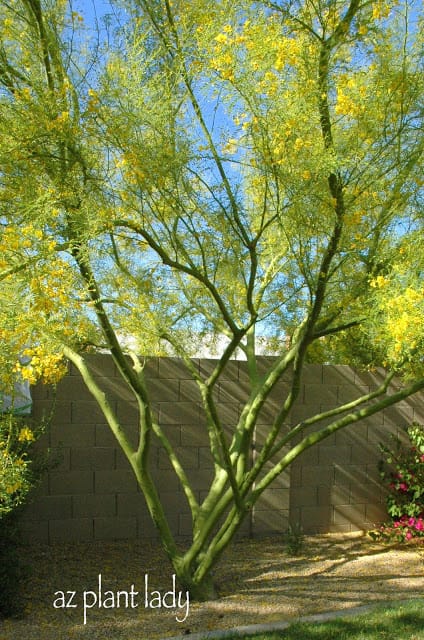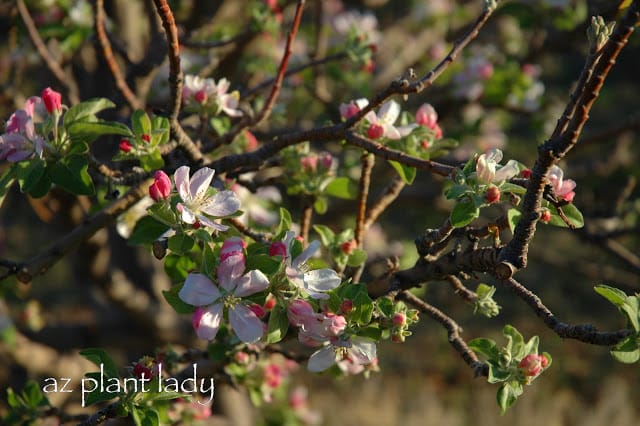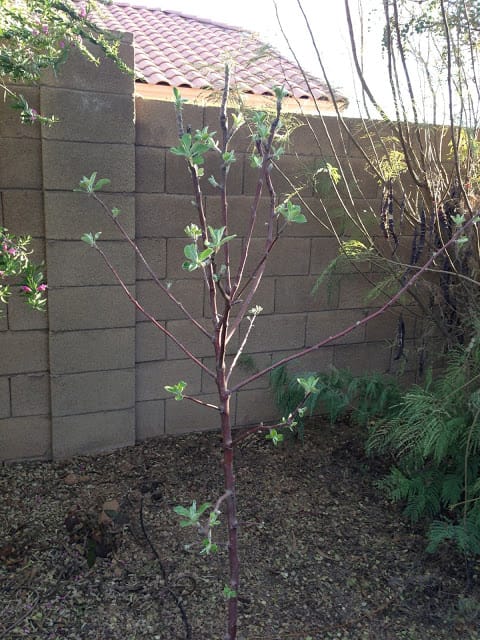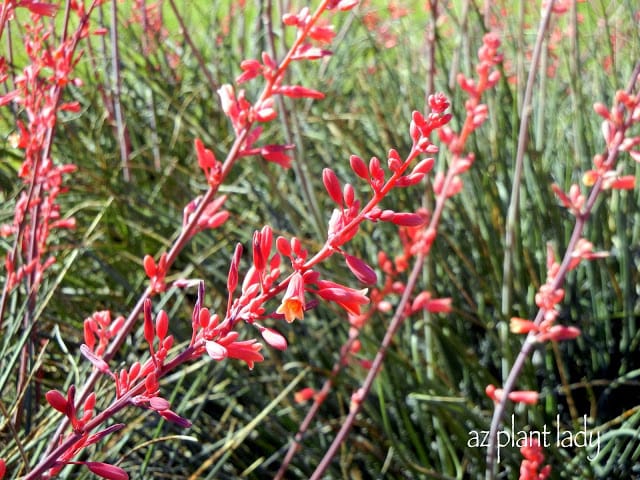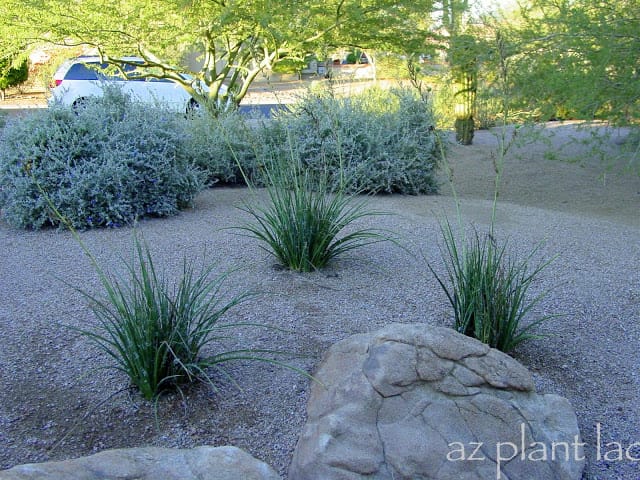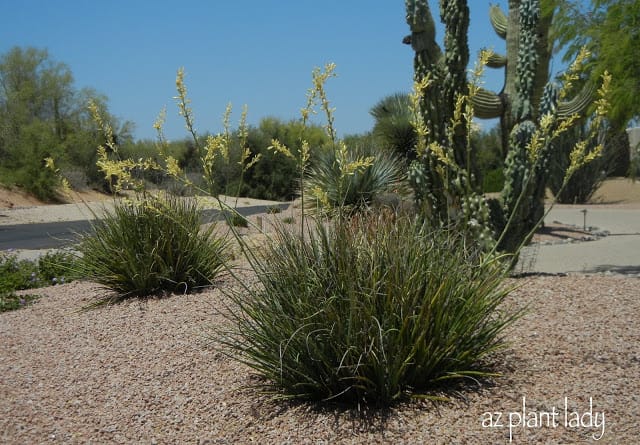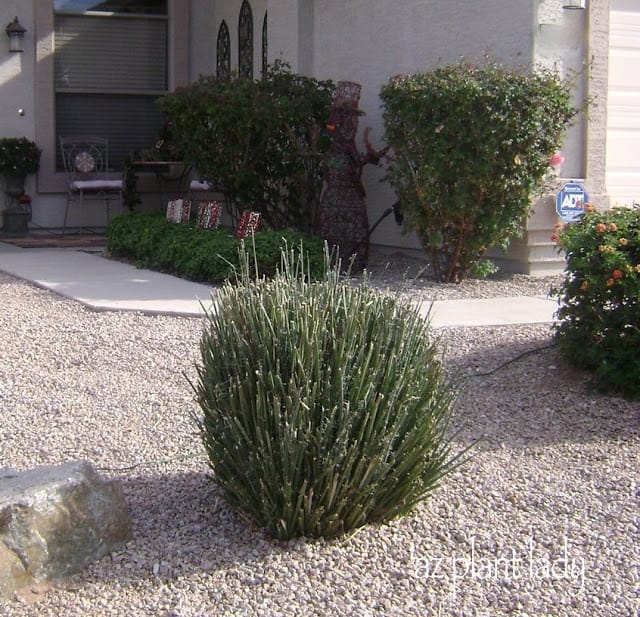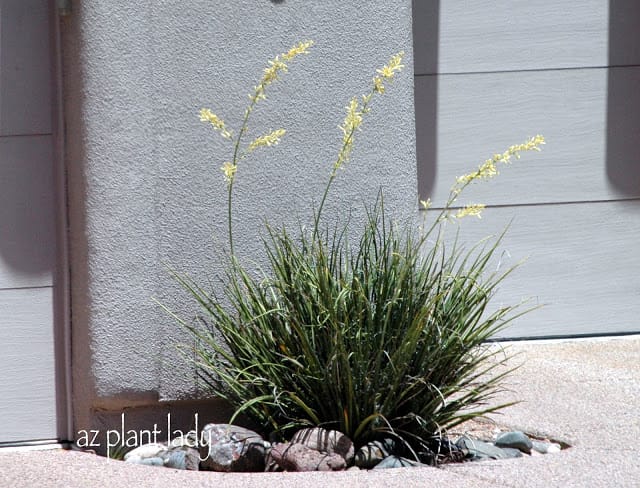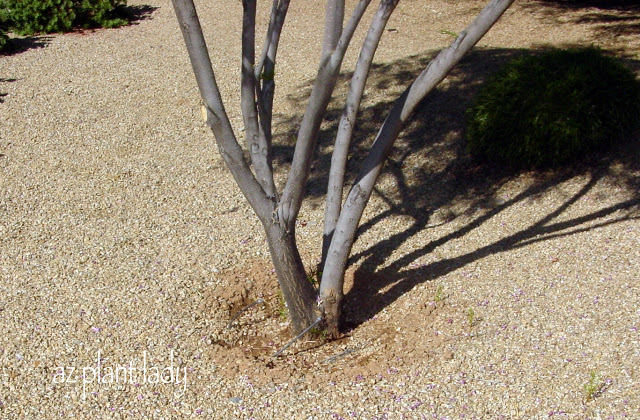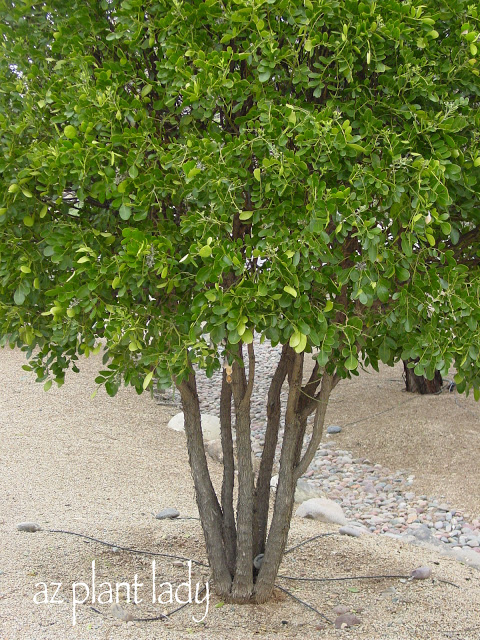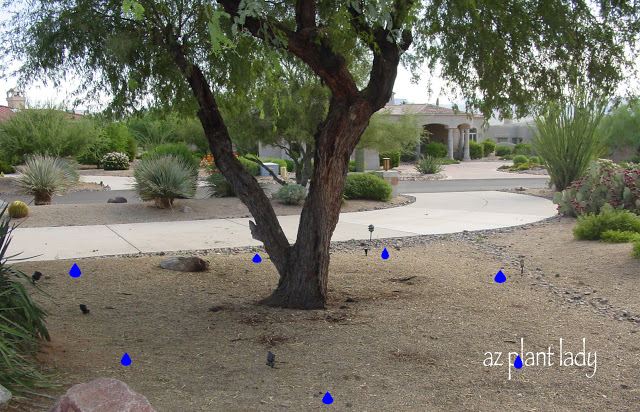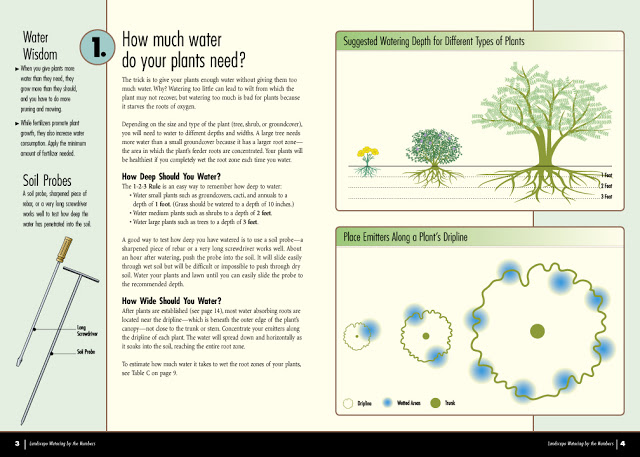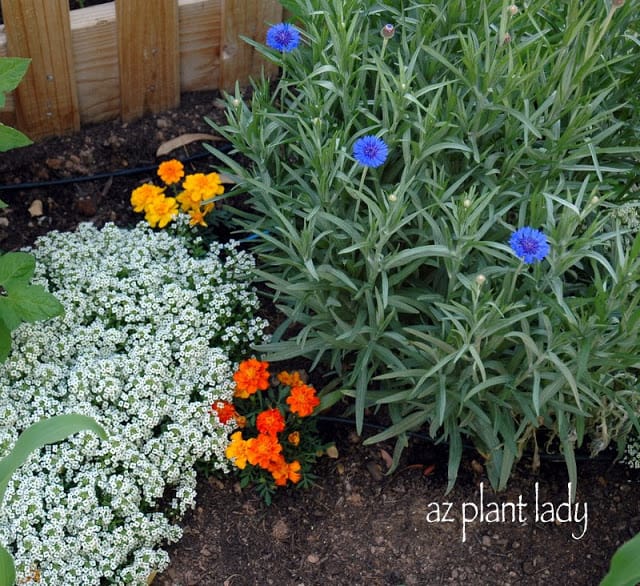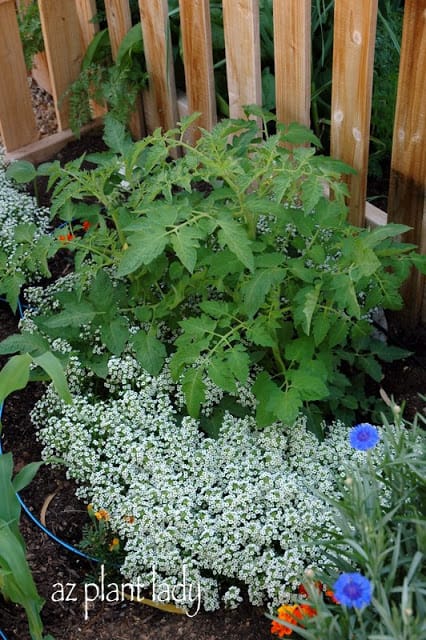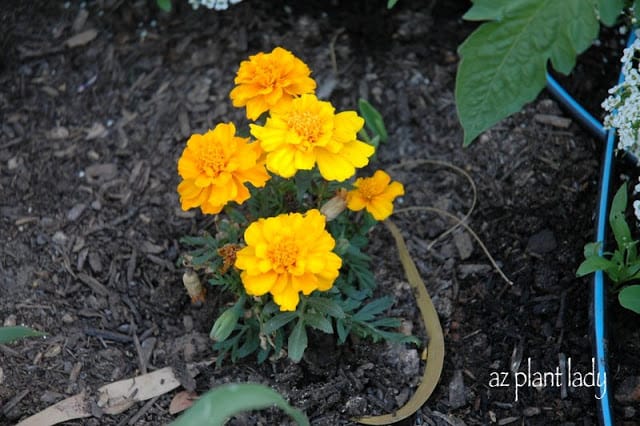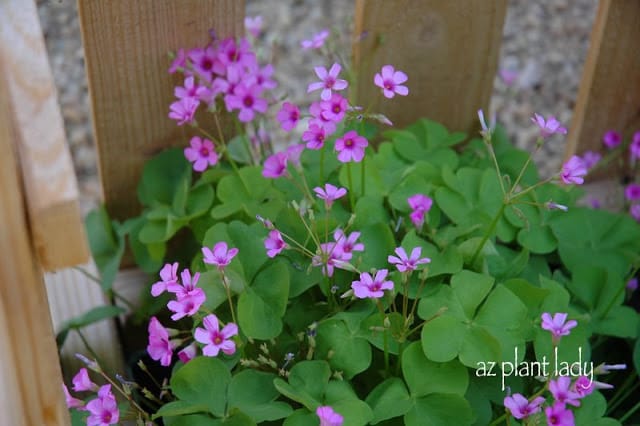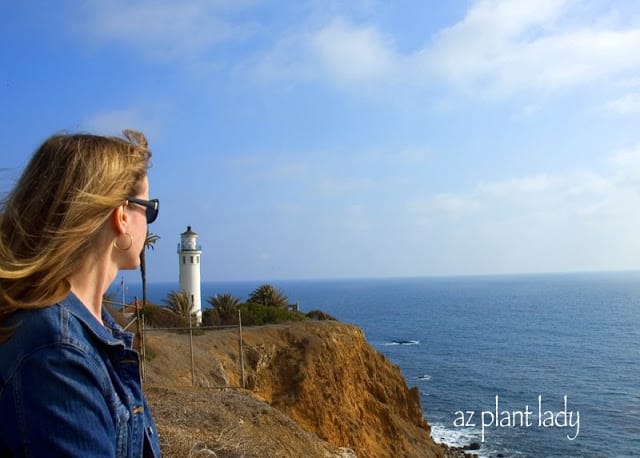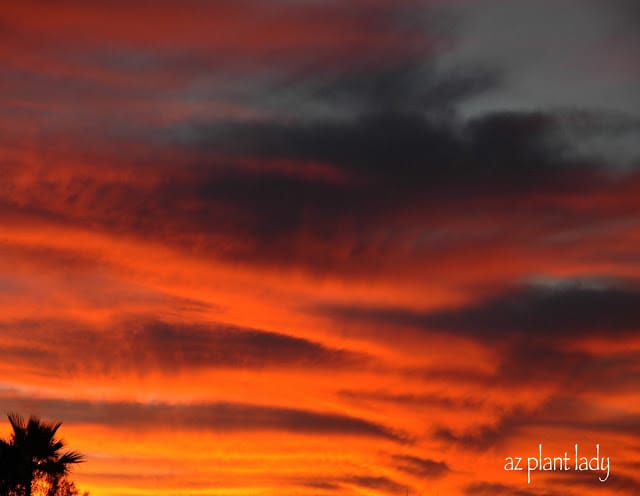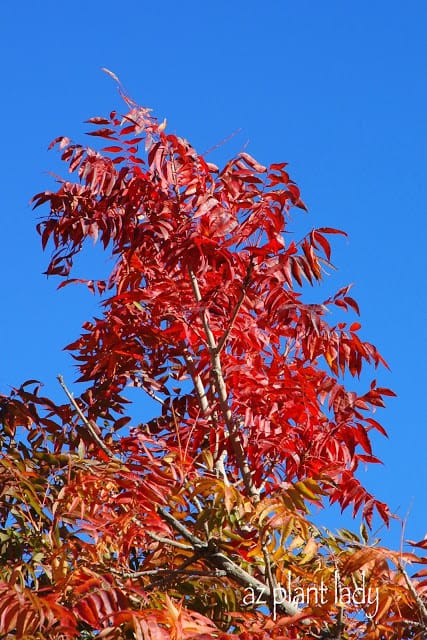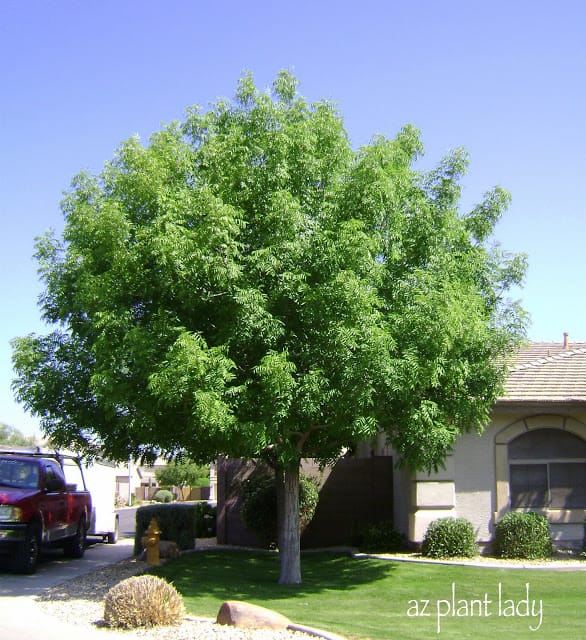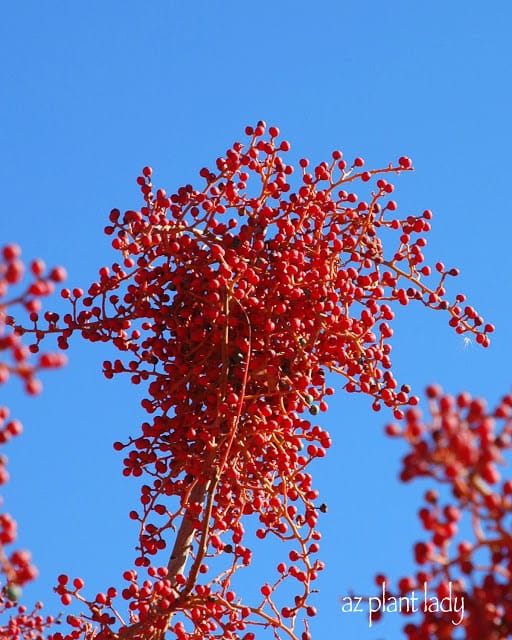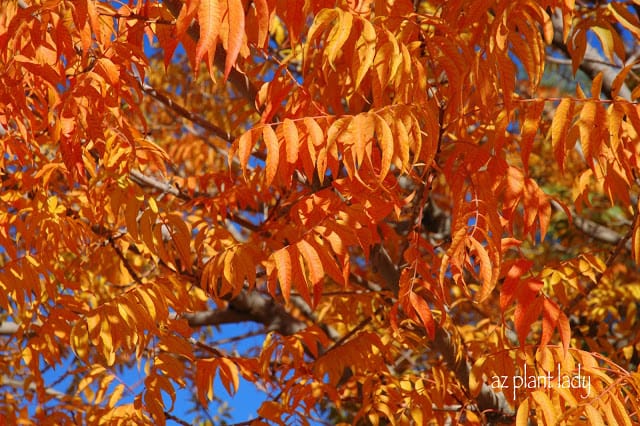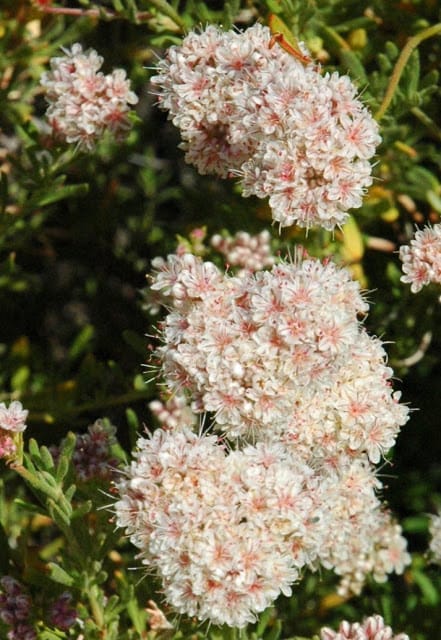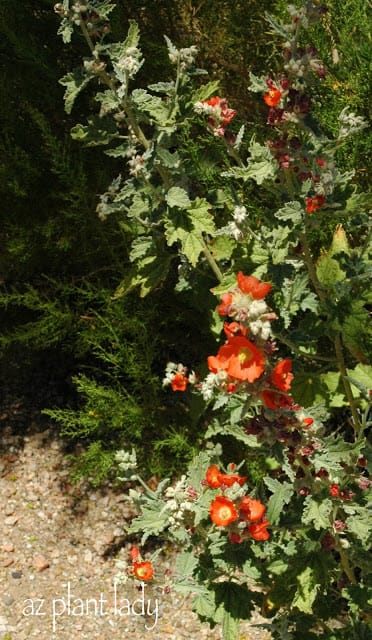Can you tell what is wrong with this Mesquite tree?
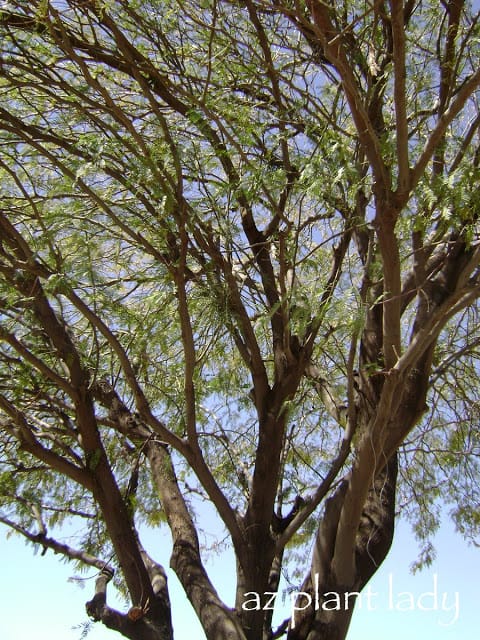
This tree has mistletoe growing in it.
Can you see it?
It is hard to spot mistletoe when it first infects a tree. I can spot it right away, but it takes some time to recognize it when it is small.
Here is a closer look…
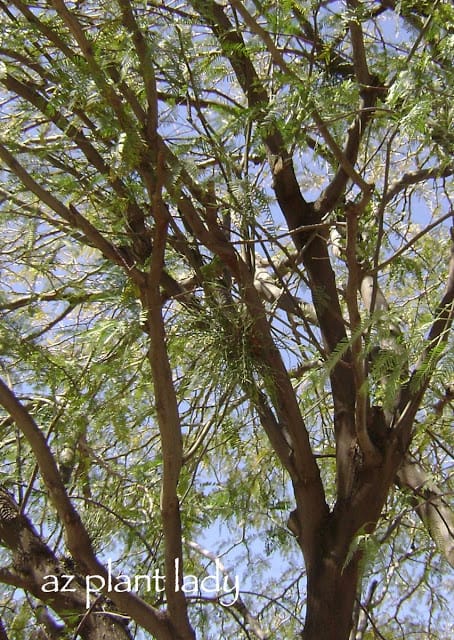
Look for green growth that has a slightly different shape and texture then the tree leaves.
Here is a close up photo…
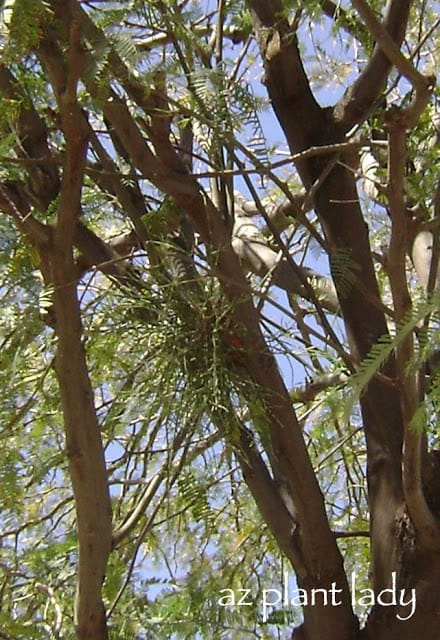
You can see where the mistletoe has attached to the tree branch.
Mistletoe is easier to spot in the winter, when many of the trees are leafless.
The types of trees that I see with mistletoe are mesquite, palo verde and sweet acacia.
Because mistletoe is a natural part of the desert ecosystem, there is debate about whether or not to remove it from trees.
Mistletoe does not kill your tree, but it can stress them because it steals nutrients from the tree. This can leave the tree open to additional stresses that can kill it.
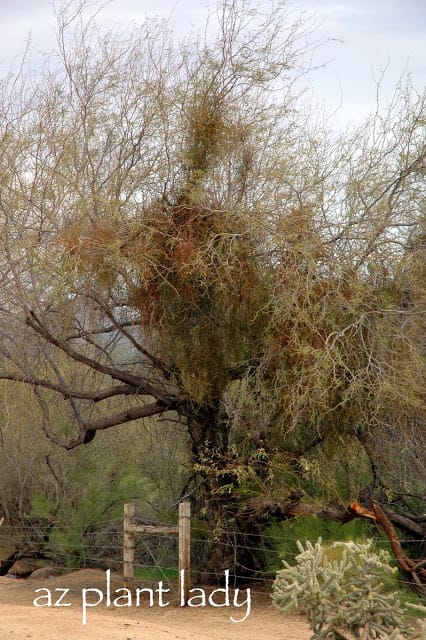
Mesquite tree heavily infested with mistletoe.
As a Certified Arborist, I recommend removing mistletoe infestations from trees in landscape settings. You may not mind the mistletoe, but it is spread by birds and your neighbors may not be too happy when their trees start sprouting mistletoe.
In the natural desert, I would leave mistletoe alone because it is part of the natural ecosystem and its berries are a food source for birds.
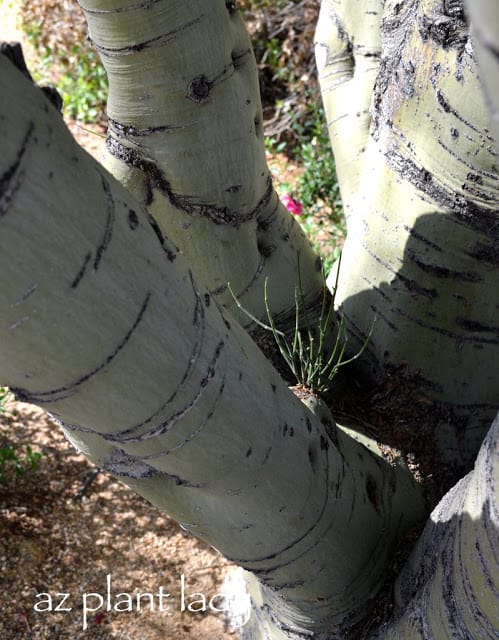
This small mistletoe growing on a palo verde tree trunk cannot be completely removed. But, you can break off the mistletoe easily and keep it from becoming more established as long as you remove any new growth as it occurs.
For more information on when it is possible to remove mistletoe completely, you can read my previous post – “Got Mistletoe?”
*********************
Thank you all for your supportive comments regarding my son Kai and his recovery from his sixth hip surgery.
His recovery has been harder this time with the pain. Also, he is a lot heavier then he was the last time. We have to carry him from his bed to his wheelchair to the toilet.
Kai is know finished with his prescription meds which has helped ‘clear his head’ a little bit. Ibuprofen is not as effective with the pain, but it is manageable.
This week, instead of our weekly dinner at the family farm – they came over to our house because it is hard to transport Kai.

It was fun seeing his young cousins play army men with Kai using his wheelchair as a battlefield.
Kai is enclosed in a ‘cloverleaf’ brace that covers his torso and both legs, which helps to immobilize his hip. The blue braces on his lower legs are his AFO’s which he has to wear all the time. They add strength to his lower legs and keep his feet straight (he has had surgeries on these areas as well in the past).
We are slowly settling into our new routine with caring for Kai while getting our other tasks done, like blogging 😉
I stepped outside, early this morning, and did a little pruning to our palo verde tree that was hanging too far over our front entry pathway. It felt great just doing something normal.
I hope your summer is off to a good start and you are finding ways to keep cool 🙂

